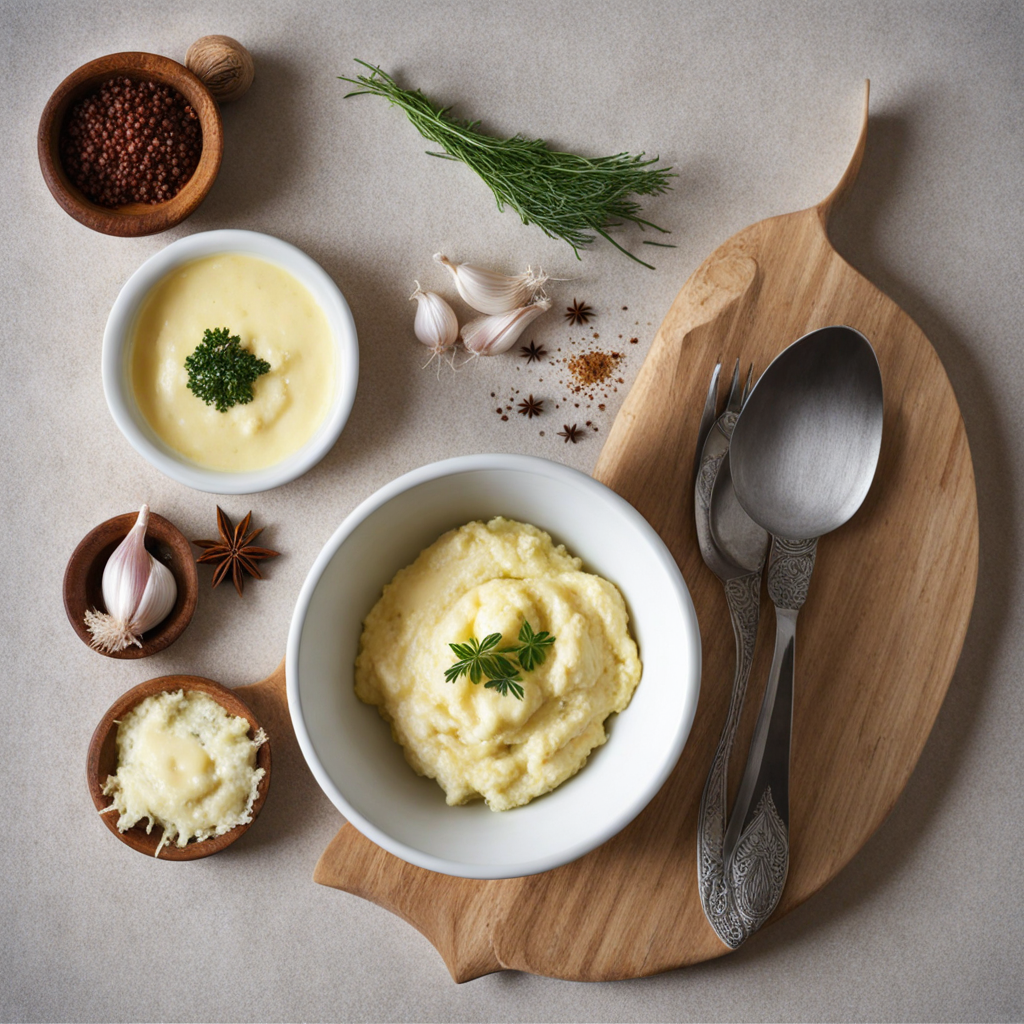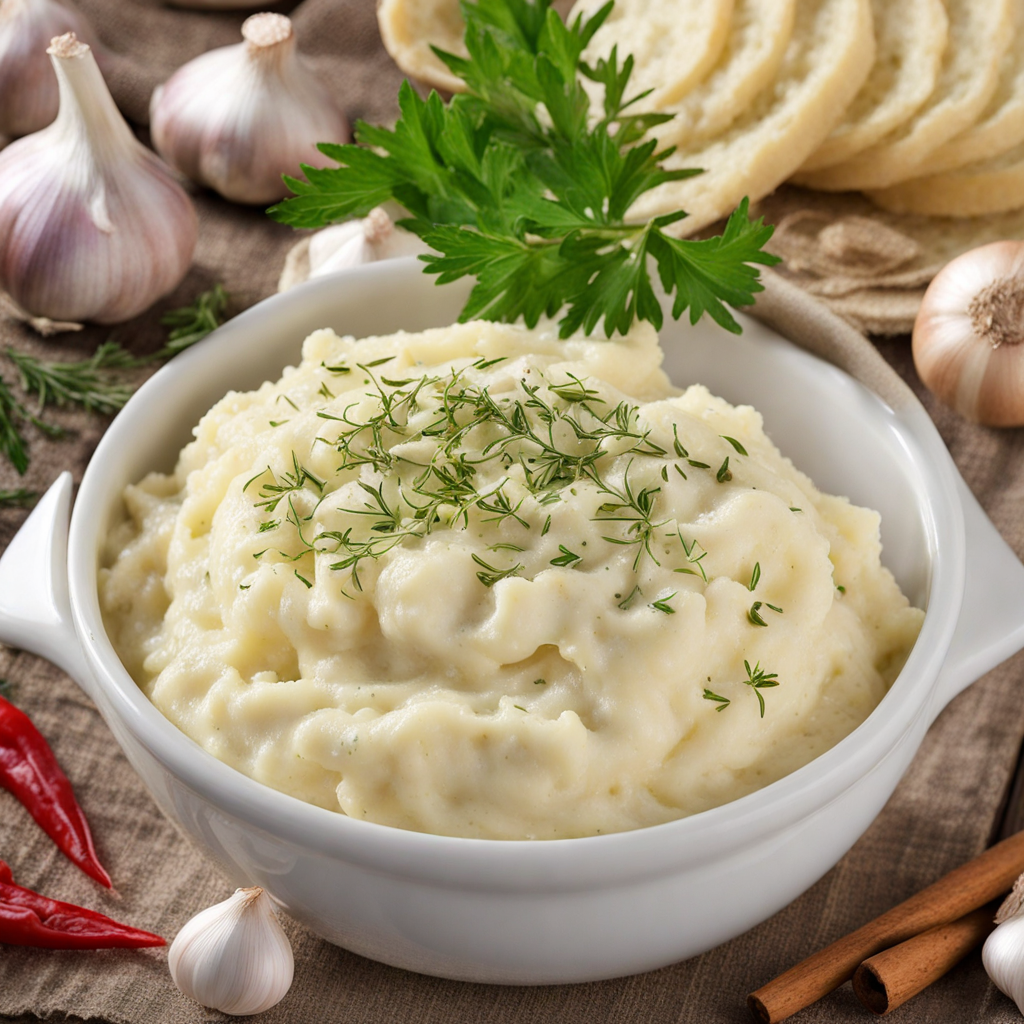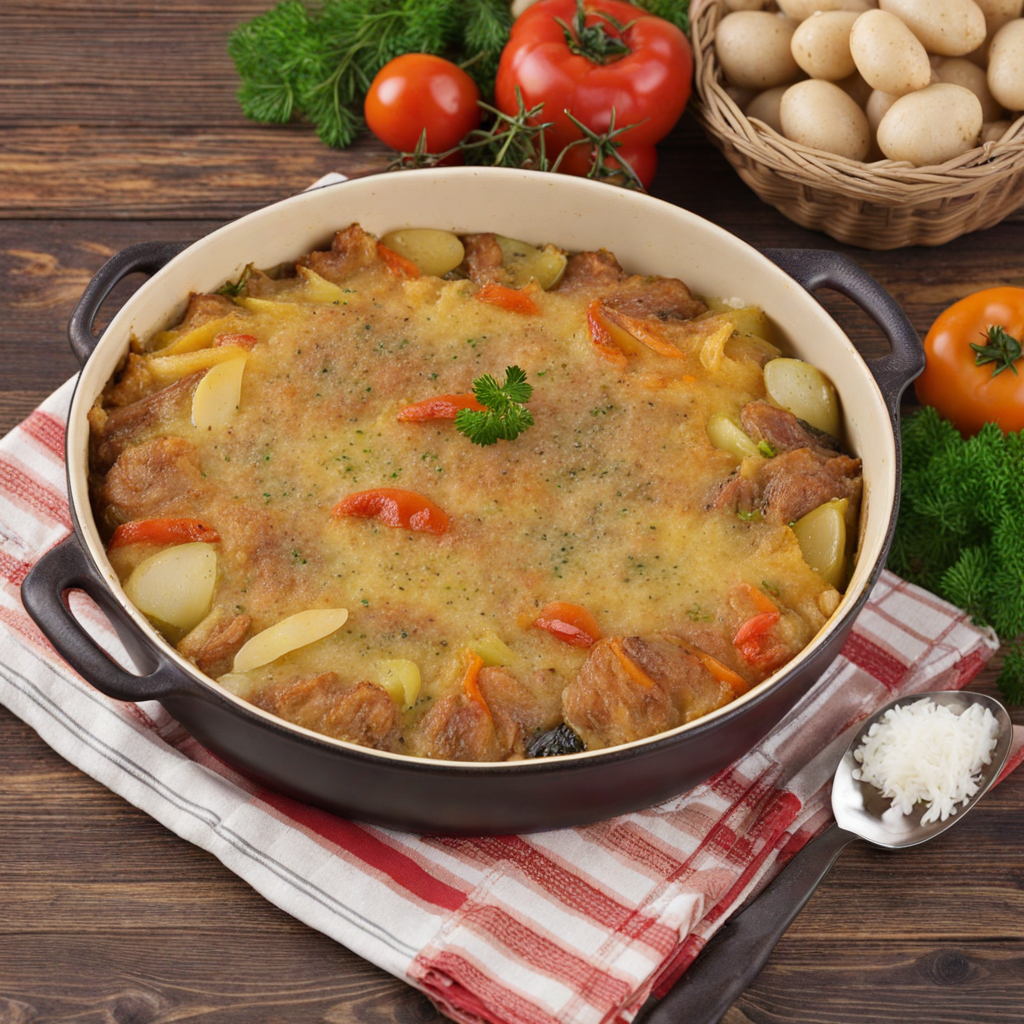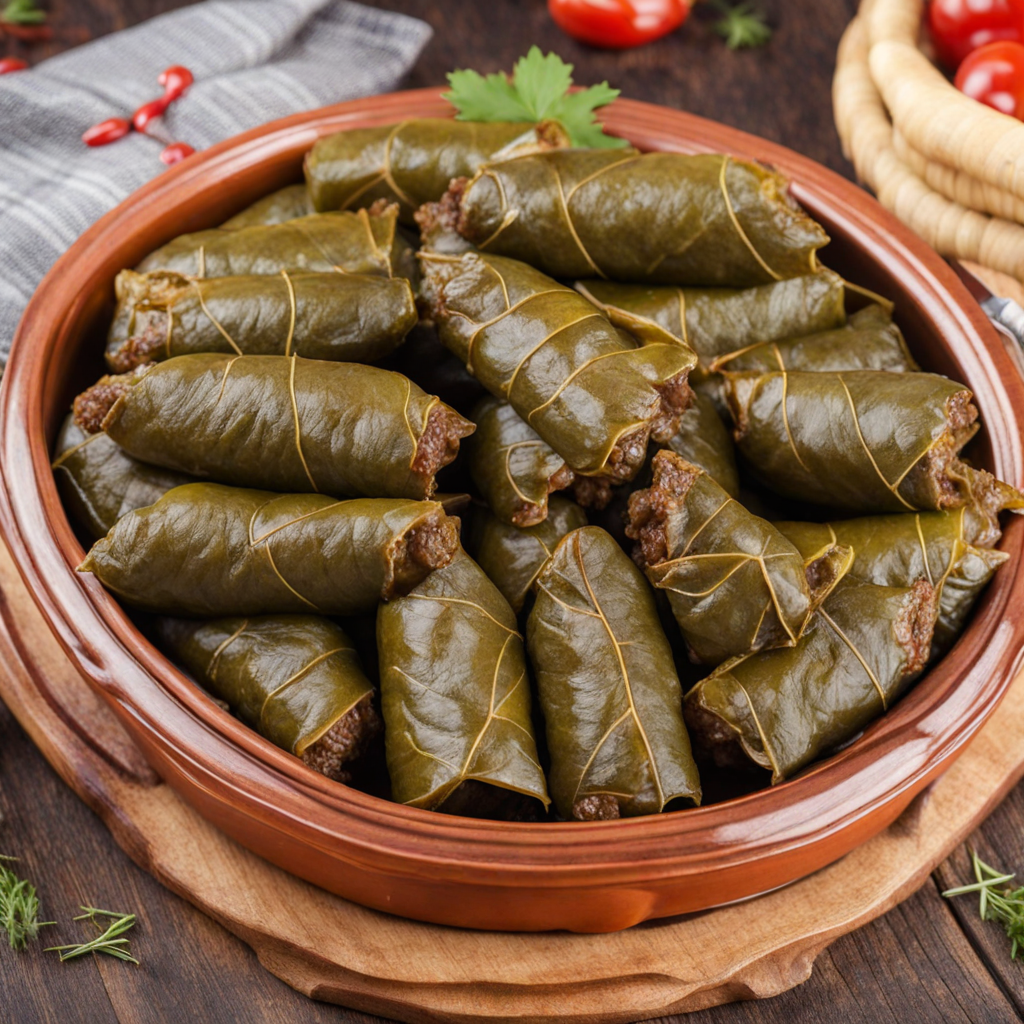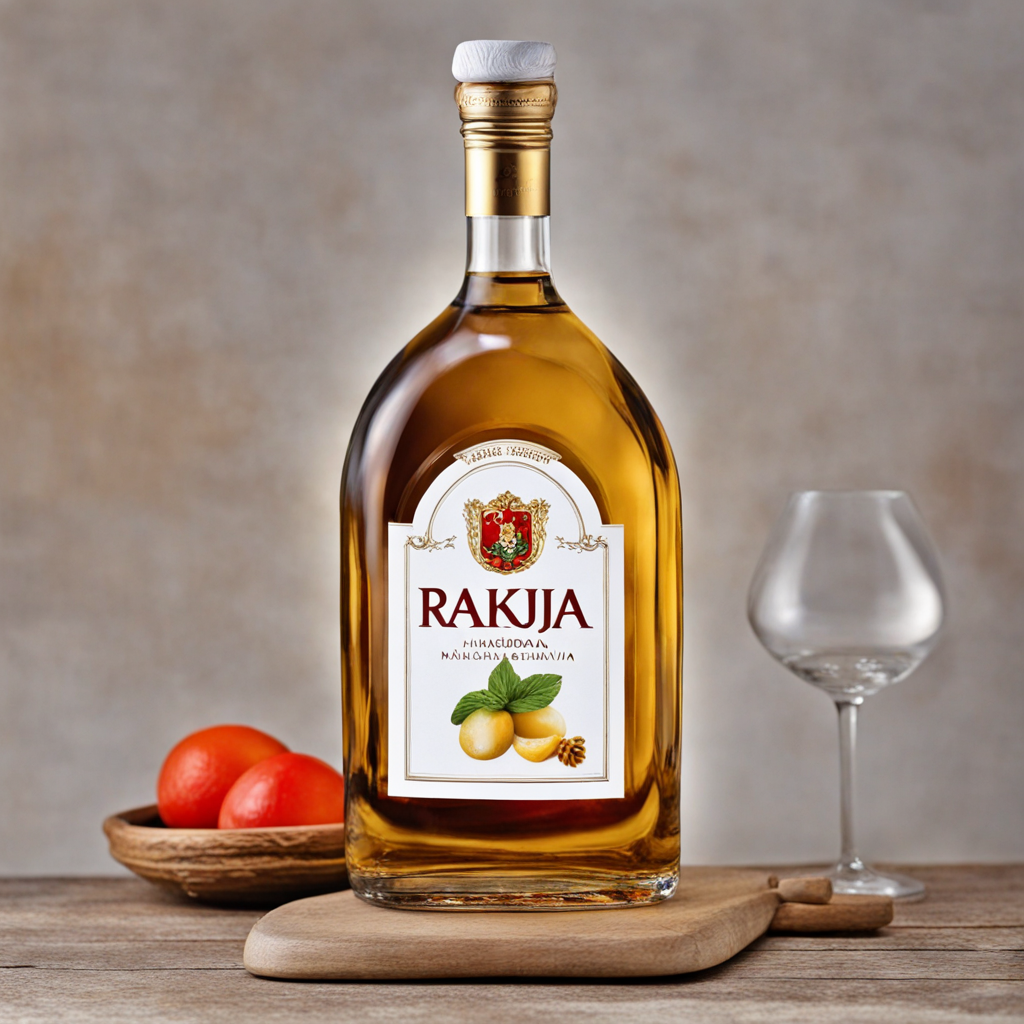Makalo
Makalo is a delightful and traditional dish from North Macedonia that showcases the region's rich culinary heritage. This dish is primarily made of a simple yet flavorful blend of ingredients, with the star being a creamy, thick dip. The base of Makalo typically consists of yogurt, which is mixed with crushed garlic, salt, and a drizzle of high-quality olive oil. The result is a tangy and aromatic dip that captures the essence of the Mediterranean, perfect for those looking to explore new flavors. What makes Makalo particularly unique is its versatility; it can be paired with a variety of foods, making it an excellent accompaniment to grilled meats, fresh vegetables, or even just warm bread. The garlic gives it a robust flavor, while the yogurt adds a refreshing creaminess that balances the dish perfectly. This combination creates a delightful contrast that can elevate any meal, inviting diners to savor each bite. In North Macedonia, it is often enjoyed during gatherings and celebrations, where it becomes a centerpiece of communal dining. Furthermore, the preparation of Makalo reflects the simplicity and authenticity of North Macedonian cooking. It is often made using locally sourced ingredients, showcasing the region's agricultural bounty. Whether enjoyed as a dip, a condiment, or a spread, Makalo invites food enthusiasts to experience the vibrant flavors of North Macedonia, offering a taste that is both comforting and enticing. Discovering Makalo is not just about tasting a dish; it’s about embracing a piece of North Macedonian culture that emphasizes togetherness and the joy of sharing food.
How It Became This Dish
Макало: A Culinary Treasure of North Macedonia Introduction The culinary landscape of North Macedonia is rich and diverse, shaped by a tapestry of cultures, traditions, and historical influences. Among the many culinary delights that exemplify this rich heritage is 'макало' (makalo), a traditional Macedonian dish that holds a significant place in the hearts and palates of the local population. This engaging history explores the origins, cultural significance, and development of макало, revealing its role as a symbol of national identity and culinary artistry. Origins of Макало The roots of макало can be traced back to the ancient civilizations that inhabited the region of North Macedonia, notably the Thracians and the Illyrians. These early inhabitants relied on the fertile lands and favorable climate, which allowed them to cultivate various crops and raise livestock. The abundance of local ingredients laid the foundation for a rich culinary tradition. Historically, макало is a type of sauce or dip made primarily from roasted red peppers, garlic, and olive oil, sometimes with the addition of nuts like walnuts. The dish's basic components reflect the agricultural wealth of the region, which has long been known for its production of peppers and olives. The technique of roasting peppers, in particular, is a method that dates back centuries and is still cherished in the culinary practices of North Macedonia today. The earliest mentions of макало can be found in folk tales and oral traditions, where it was prepared during harvest festivals and family gatherings. It served not only as a delicious accompaniment to bread or grilled meats but also as a means of celebrating the bounty of the land. As the region evolved through various historical periods—including Roman, Byzantine, and Ottoman influences—the preparation and consumption of макало also adapted, blending local ingredients with culinary techniques introduced by these cultures. Cultural Significance In North Macedonia, макало is more than just a dish; it is a symbol of hospitality and community. Traditionally, it is served at gatherings, celebrations, and everyday meals, often accompanying grilled meats, bread, or fresh vegetables. The act of sharing макало with family and friends embodies the spirit of togetherness that is central to Macedonian culture. The preparation of макало is often a communal activity, with family members gathering to roast peppers, crush garlic, and blend ingredients. This process fosters connections among generations, as older family members pass down their secret recipes and techniques to younger ones. The preparation of макalo is also marked by a sense of pride, as families strive to create the best version of the dish, often competing with one another during festive occasions. In addition to its role in family gatherings, макало is also a prominent feature of Macedonian national dishes presented at cultural festivals and international events. It showcases the country’s culinary identity and is often highlighted by chefs who aim to elevate traditional recipes into contemporary culinary experiences. This transition reflects a broader trend in which traditional foods are being reimagined and revived in the face of globalization, ensuring that cultural heritage is preserved while adapting to modern tastes. Development Over Time As North Macedonia navigated various political and social changes throughout the 20th century, the dish of макало evolved alongside the nation’s identity. The rise of national consciousness in the late 19th and early 20th centuries saw a renewed interest in traditional Macedonian cuisine, including макало. During this period, culinary historians and enthusiasts began documenting traditional recipes, leading to the establishment of a distinct Macedonian culinary identity. The socialist era brought about significant changes in food production and consumption in North Macedonia. With the establishment of state-run farms and cooperatives, the availability of fresh ingredients increased, allowing home cooks to experiment with traditional dishes. However, the emphasis on quantity over quality sometimes diluted the flavors of traditional recipes. It was during this time that макало became a staple in households across the nation, providing families with a simple yet flavorful dish that could be prepared with minimal resources. Following the breakup of Yugoslavia in the early 1990s, North Macedonia experienced significant political and economic challenges. The culinary landscape during this time began to reflect the struggles of the nation, with families relying on traditional recipes to maintain a sense of stability and continuity in their lives. The act of preparing макало became a form of resistance against the changing world, a way to hold onto cultural roots amidst uncertainty. In the 21st century, макало has found its way into the spotlight of the gastronomic world, as chefs and food enthusiasts recognize the importance of preserving traditional recipes. The dish has been featured in culinary competitions, cooking shows, and international food festivals, where it is celebrated for its vibrant flavors and cultural significance. Furthermore, the rise of the farm-to-table movement has encouraged a renewed appreciation for local ingredients, allowing макало to shine as a dish that embodies the essence of North Macedonian agriculture. Conclusion The journey of макало from its ancient origins to its contemporary status as a beloved dish is a testament to the resilience of Macedonian culinary traditions. Its cultural significance is deeply intertwined with the social fabric of North Macedonia, serving as a symbol of hospitality, community, and national pride. As the world continues to embrace diverse culinary heritages, макало stands out as a delicious reminder of the rich history and vibrant culture of North Macedonia. By exploring the origins, cultural significance, and evolution of макало, we gain insight into the enduring power of food as a means of connecting people, preserving traditions, and celebrating national identity. As North Macedonia continues to navigate the complexities of the modern world, dishes like макало will undoubtedly remain a cherished part of its culinary legacy, inviting future generations to gather around the table and share in the flavors of their heritage.
You may like
Discover local flavors from North Macedonia


